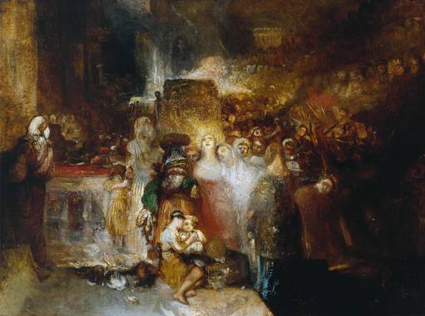AMBITIOUS paintings can be irritating in much the same way that ambitious people can be irritating: forever insinuating their own importance in ways that they hope are subtle but are actually overbearing. Ambition is insecurity with a sense of purpose; and insecurity always shows, in art as in life. Turner is generally regarded as the greatest British painter in history, and he was certainly one of the most ambitious. ''Turner: The Final Years'', at the Tate Gallery, suggests that he may also have been the most insecure. The peculiarity of his art is often overlooked, and it is a peculiarity that stems entirely from insecurity - from the uneasy coexistence, within Turner, of a vision and an ambition that ran counter to one another.
The essence of Turner's vision is instability, ephemerality. He saw the fluctuant nature of things and he was a great painter of insubstantiality, a painter of the least solid phenomena: light, atmosphere, mists, vapours and sea-spray. He was, as Hazlitt said, the artist who painted ''pictures of nothing, and very like''. Hazlitt meant the remark damningly, but it is probably the best definition of Turner's genius, and the most succinct description of the radical quality of his art. Turner was great because he dared to paint pictures of nothing, of a world dissolved into light and colour - or at least he dared to, as the Tate exhibition shows, when his ambition did not get in the way.
Turner reinvented painting, using oil as if it were water-colour to create tremendous etherised voids: landscapes that are charged with a visionary sense, images of the world that propose chaos and entropy as the ruling principles of reality. But Turner also wanted to paint a different kind of painting, and to be a diferent kind of...

Chaos is come again
02-03-1993

